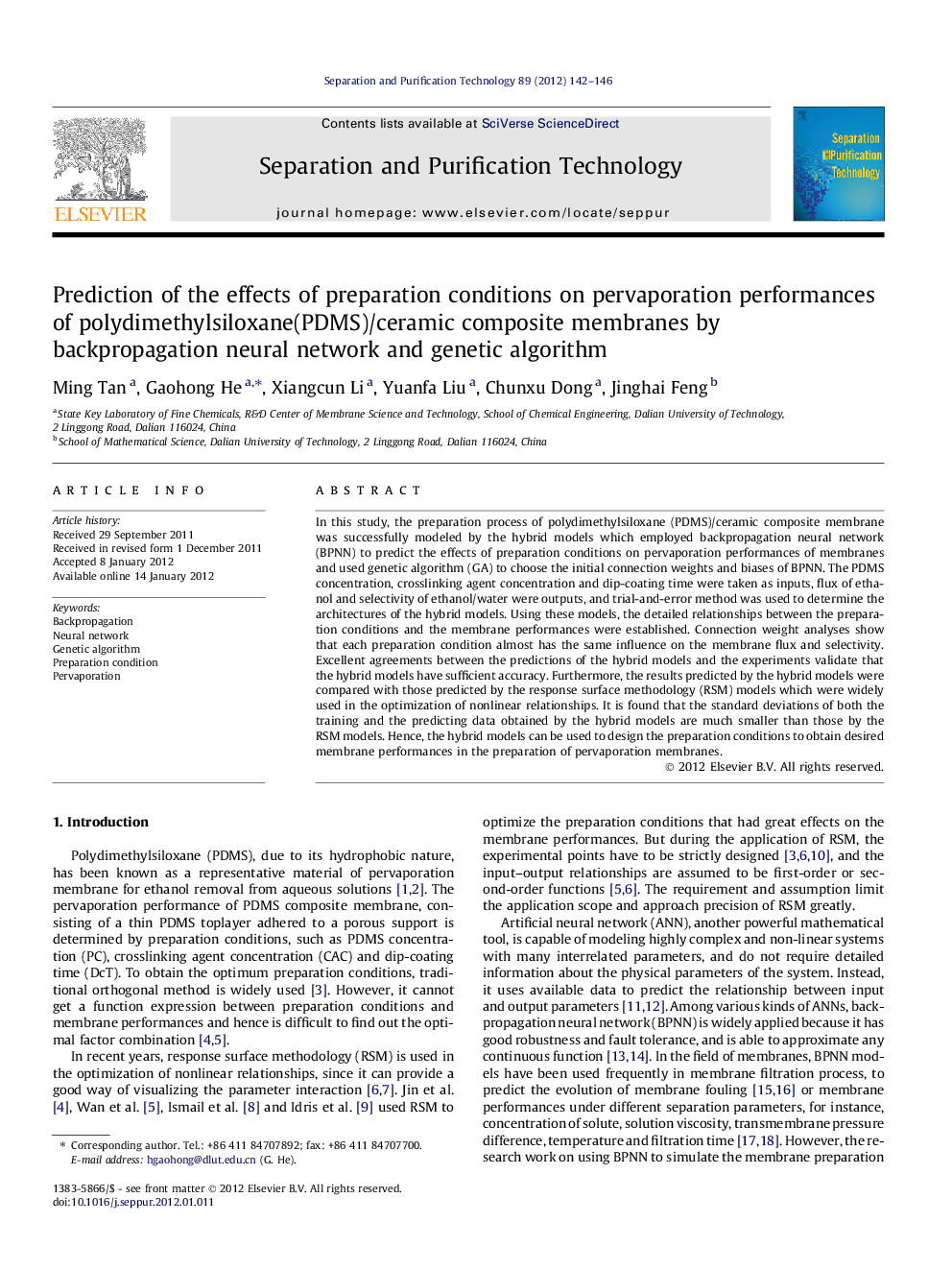| Article ID | Journal | Published Year | Pages | File Type |
|---|---|---|---|---|
| 642264 | Separation and Purification Technology | 2012 | 5 Pages |
In this study, the preparation process of polydimethylsiloxane (PDMS)/ceramic composite membrane was successfully modeled by the hybrid models which employed backpropagation neural network (BPNN) to predict the effects of preparation conditions on pervaporation performances of membranes and used genetic algorithm (GA) to choose the initial connection weights and biases of BPNN. The PDMS concentration, crosslinking agent concentration and dip-coating time were taken as inputs, flux of ethanol and selectivity of ethanol/water were outputs, and trial-and-error method was used to determine the architectures of the hybrid models. Using these models, the detailed relationships between the preparation conditions and the membrane performances were established. Connection weight analyses show that each preparation condition almost has the same influence on the membrane flux and selectivity. Excellent agreements between the predictions of the hybrid models and the experiments validate that the hybrid models have sufficient accuracy. Furthermore, the results predicted by the hybrid models were compared with those predicted by the response surface methodology (RSM) models which were widely used in the optimization of nonlinear relationships. It is found that the standard deviations of both the training and the predicting data obtained by the hybrid models are much smaller than those by the RSM models. Hence, the hybrid models can be used to design the preparation conditions to obtain desired membrane performances in the preparation of pervaporation membranes.
► GA is employed to choose the initial connection weights and biases of BPNN. ► The model can calculate the relative importance of each preparation condition. ► Effects of preparation conditions on membrane performances are predicted. ► The model can design preparation conditions to obtain desired membrane performance.
